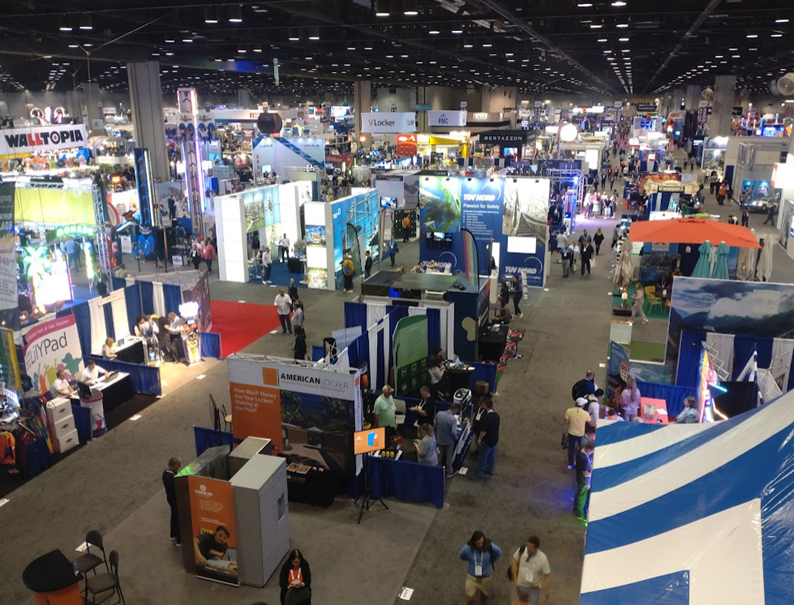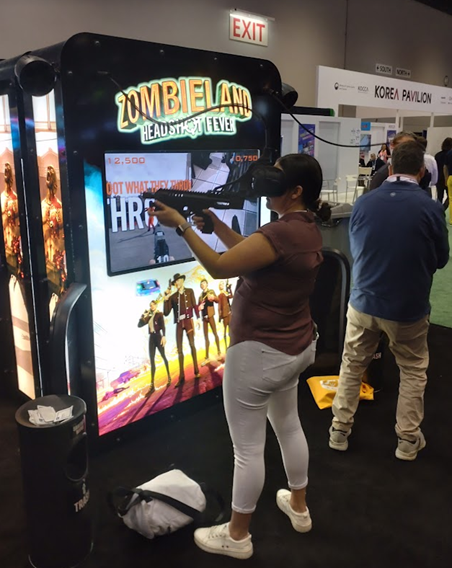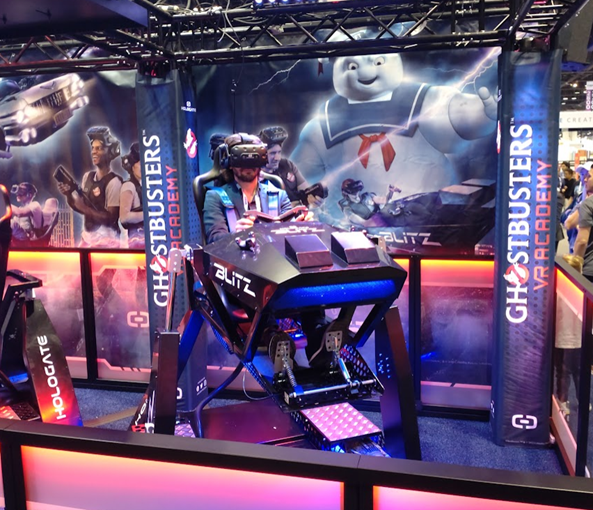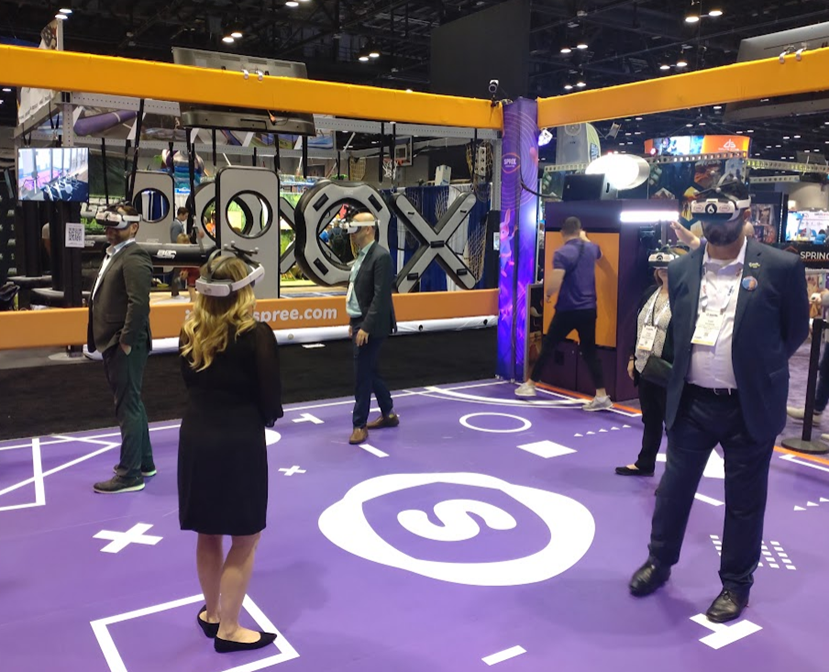Virtual Arena: the race ahead for LBE XR

The Application of XR into the attractions and amusement landscape is covered by industry specialist Kevin Williams, in his latest Virtual Arena column – Looking at the trends and new technology revealed to the trade during Novembers IAAPA Expo 2022.
Author: Kevin Williams
In this first new column for MIXED, we look at the developments in the commercial entertainment scene, specifically regarding the continued investment in VR based experiences.
Content
The attractions trade had exclusive access to the latest developments and trends during November 2022, at the International Association of Amusement Parks and Attractions (IAAPA) convention in Orlando, Florida. This amazing trade event covered 500,000 square feet with over 1,080 exhibitors – and represented the latest trends across the location-based entertainment (LBE) sector.
VR Kiosks
One of the biggest trends in VR attractions has been “VR kiosks”, unattended, self-service cabinets that offer an amusement take on making VR available to a wide audience. One such developer is VRsenal who presented their new slimline ‘Monolith’ platform. The system running VR games such as ‘Synth Riders Arcade’ – a beat music rhythm game.
The system was also shown with the new Sony Pictures license ‘Zombiland: Headshot Fever’ – a shooting game that incorporates a gun mounted onto the VR headset, rather than wearing the device, making it easier to jump into the action. A similar system had been originally employed by SEGA Amusement International on their ‘VR Agent’ cabinet.
The use of well-known licensed IP in out-of-home VR experiences has become common in the sector, and VR industry leader HOLOGATE showed their latest property on their arena-based system with ‘Ghostbusters VR Academy’.
Developed in partnership with Sony Pictures Virtual Reality and in collaboration with Ghost Corps – the game has four-players using tethered VR headsets combating ghosts. The company also displayed their ‘HOLOGATE Blitz’ VR motion simulator that had received a Ghostbusters racing experience of its own. These are unique game presentations separate to the planned consumer license release.
Free-Roaming VR Experiences
Another major trend gathering momentum in the LBE scene is that of “free-roaming VR” experiences, and several were on display at the show. Creative Works presented their new ‘LimitlessVR’ – players using the latest HTC Focus 3 headsets and special weapons, moving through an arena that includes physical walls incorporated into the virtual world, in a lasertag-style experience, able to accommodate up to 16-players.
Another free-roaming VR game platform with physical props was seen with the launch of ‘TowerTag Battlezone’ – the latest version of the popular VR multiplayer competitive shooter for LBE deployment.

Blasting fun on Creative Works LimitlessVR | Image: KWP
The inclusion of free movement within the virtual space, and high levels of competition, has seen eSports a major component in many of the new platforms being launched. Phenomenon was running tournaments on their ‘VR eSports Arena’ with the new release ‘Space Dance Harmony’.
The creation of arena enclosures has flourished in the sector, with new developers like Exploring Digital, with their ‘Megaverse VR Theater’ free-roaming arena in partnership with HTC. While Springboard VR, an operation of Vertigo Games, a major licensor and distributor of content for VR arcades internationally, showed a new free-roaming game experience with ‘After the Fall: LB VR Edition’ – the all new full-body 4-player VR adventure.
While other developers like VEX Solutions with their ‘VEX Adventure’ platform, and Hero Zone VR and their ‘Hero Zone Arena’ proved the popularity of this approach to free-roaming VR. While focusing on a family-friendly audience, SPREE Interactive presented their ‘SPREE Arena’ running up to six players using the PICO Neo 3 VR headset, experiences aimed at player-aged 6-years and older.
VR standalone attractions
Offering VR as their own standalone attraction has proven a strong money maker; developers like MajorMega, with their ‘HyperDeck VR’ attraction, incorporating haptic effects and a motion floor, all to play their new arcade-style shooter ‘Die Zombies!’. Standalone attractions also include VR simulators like from Matrix Technology with their ‘ORB Game’ – a new Pod enclosure comprising four VR motion seats.
The ability to offer simulator motion experiences in VR have seen developers like Talon Simulations release their ‘Talon Vortex’ arcade simulator, a motion-seat with capability to be configured as a racing or flying experience. The amusement industry keen to have VR added to their mix of entertainment have created their own unattended VR cabinets, Raw Thrills showed their ‘MotoGP VR’ – the motorbike racer now including a tethered VR headset.
While LAI Games revealed ‘Asphalt 9 Legends Arcade - VR’, an immersive version of their popular racing arcade game. LAI Games is famous for their two-rider VR experience that has seen an update with ‘Virtual Rabbids: Ultra HD’. While amusement manufacturer UNIS Technology, revealed their new VR arcade-shooter with an immersive pirate theme, ‘Sailor’s Quest: VR’ – incorporating a 5D motion-platform.
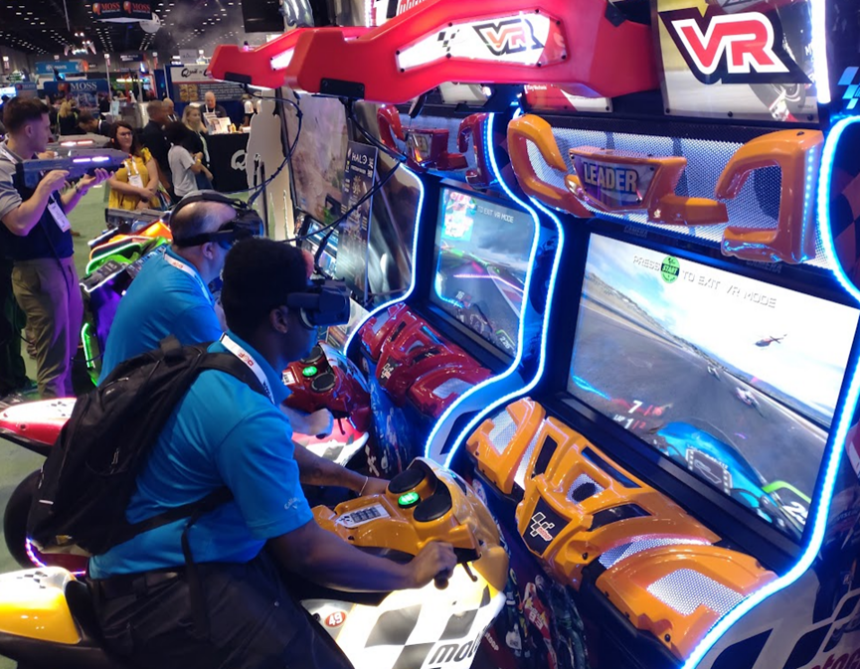
VR motorbike action from Raw Thrills | Bild: KWP
An emerging trend witnessed from the event was that of “Immersive Enclosure” technology. Removing the encumbrance of having to use a VR headset to witness the virtual environment and be able to place groups of players in the game without isolating them is an obvious benefit for an industry looking at passing hundreds of guests at a time through their experiences.
Experiences without headset
The latest immersive technology was employed on many booths that removed the need for headsets. One such example was from Brogent Technologies, showing their F1 simulator, on their ‘miRide’ motion base. The system using a unique mini-LED dome display filling the racers full field-of-view (FOV). Other developers creating immersive enclosures included INOWIZE and their new ‘QBIX’ – an interactive portal, using projection and tracked controllers to blast hordes of aliens within the enclosure. While Valo Motion presented their ‘ValoArena’, using computer vision to place the players image and movements in the game, creating a competitive and fast-paced experience.

In the game playing ValoArena | Bild: KWP
Another emerging trend defined by the show was that of “Mixed Reality” (MR), using both augmented headsets, and projection systems, superimposing the virtual world onto the guest’s field-of-view, (technology all-encompassing the XR technology revolution). AR glasses were used by exhibitor Enklu for their ‘Verse Immersive’ platform, employing Microsoft HoloLens 2 headsets to place guests in an interactive winter wonderland pop-up experience. While developer and operator Battle Karts promoted their go-kart, projected racecourse attraction, that has seen several openings in Europe.
One surprise application of the projected augmented environment was with AR Axe-Throwing systems. Augmenting the skill game, by adding projected targets and scoring, launched by companies such as Lasertron. This approach of projecting targets and creating mini games on traditional throwing games has been seen with the launch of AR Darts, also on show from 501 Entertainment.
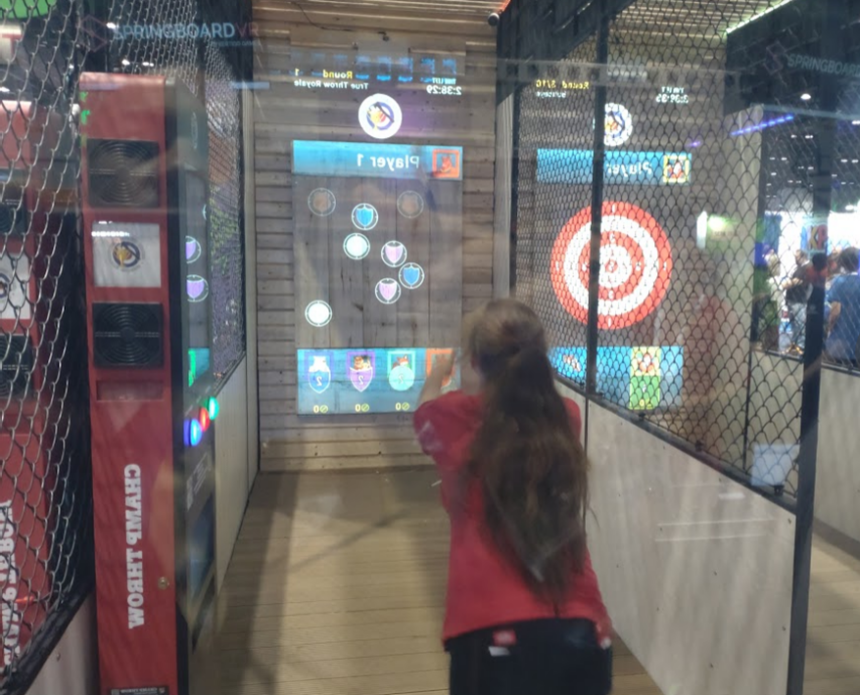
AR Axe-Throwing becomes the next big hit | Bild: KWP
This concludes the snapshot of the leading VR and MR releases revealed at the trade convention. Now the industry will move on to the New Year with launches of brand-new entertainment experiences based on this technology, as well as the release of new IP properties, which we will report on soon.
About the Author – Kevin Williams is a widely-respected specialist on entertainment and technology assisting international clients in developing immersive and interactive entertainment technology and facilities.
Note: Links to online stores in articles can be so-called affiliate links. If you buy through this link, MIXED receives a commission from the provider. For you the price does not change.
